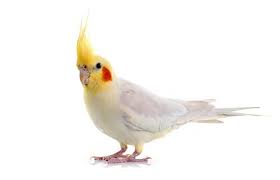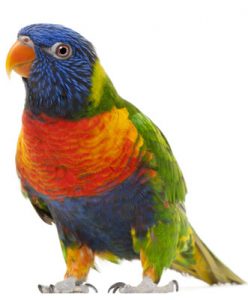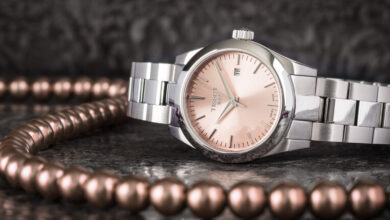Best pet birds for kids: Only if you and the new owner are aware of all the obligations associated with this privilege should you give your child a pet bird. To keep your bird a happy, cheerful, and healthy friend for many years, daily cage cleaning, playing, thoughtful feeding, and wing and claw clipping are required.
Don’t be surprised if it takes time, patience, attention, and maturity to raise and train a pet bird. Consider your child’s input when making decisions for the species and treat them like an adult.
A social cockatiel or pacific parrotlet is one of the choices for the best pet birds for kids will be delighted with love and care if their kid enjoys petting and wants to make lifelong friends with their pets. Finding a species that not only sings wonderfully and is colorful but also fits the young owner’s personality and lifestyle is crucial.
Some children do well with pet birds, but it takes the right pairing of child and pet bird. Quick movements, loud noises, and grabbing hands are all perceived as frightening by parrots and other birds because they are prey animals. Parents can use the following criteria to determine whether their child is a good candidate to possess a pet bird:
If any of the following apply to your child, You should not get a pet bird:
- The primary caregiver for the bird will be your child, who must be under the age of 12. Some kids aren’t aware of the effects of their behavior, especially if they neglect to feed or water their pet birds.
- Don’t get a pet bird if the parent or child is unable or reluctant to take it to the veterinarian.
- If the child has issues managing their emotions. Prey animals will bite or fly in response to physical displays of aggression.
There are nine kinds recommended for the best pet birds for kids below if your child is old enough, patient enough, and mature enough to care for a pet bird. They were chosen due to their minimal noise output, accessibility, affordability, ease of care (in comparison to larger parrots), size, less demanding mental and emotional requirements, and life expectancy.
Table of Contents:
- What to Consider Before Buying the Best Bird for Kids:
- Best Pet Birds for Kids:
- Easy Caring Best Birds for kids:
- FAQs –
What to Consider Before Buying the Best Bird for Kids:
Here are some things to consider before adopting any kind of pet: Before purchasing a pet bird, you should consider the following issues:
- Is the bird good for my family, particularly my kids?
- Do I actually want a pet bird?
- Am I able to take care of a bird?
- Can I afford to maintain the bird’s health?
- Do I want to clean up the bird’s mess?
Birds require different care than cats and dogs do, and they are notorious for creating quite a mess in their cages. Consider the lifestyle your family leads. You often travel, right?
Consider your kids. What is their age? A bird might not be the best choice for your family because they require just as much time as other pets, if not more.
Visits to the veterinarian are not free, and certain vet bills can be quite pricey. You must conduct research if you want to keep a bird so that you can recognize illnesses in birds.
These answers can help you in focusing your considerations when determining whether or not a pet bird is suitable for your household.
Best Pet Birds for Kids:
Since every species of bird is different, it’s important to consider the kind of birds that get along with kids while looking for the finest bird pets for kids.
There are Seven Types of Birds that make the best pets for kids are:
- Finches
- Canaries
- Budgies/Parakeets
- Cockatiels
- Parrots
- Lovebirds
- Lorikeets
Even so, learning that a particular breed of bird makes a fantastic companion for a kid is insufficient. For starters, you should think about the ages of your kid, your lifestyle, and your money.
All that’s left to do is determine which bird best meets your needs once you’ve made the decision to keep one as a pet.
1 – Finches:

Finches are often pleasant, easy to care for, and little in size. Finches make calming chirps that resemble pleasant music to the human ear. Due to their strong social nature, finches do poorly when housed alone. Finches should be purchased in pairs. Two of the same gender can be kept. They might breed if you choose to purchase a male and a female. Plan ahead if you decide to have finch offspring. Finches enjoy sunflower seeds and can live up to 8 years.
2 – Canaries:
They are quiet for extended periods of time and are often shy birds. The canaries are simple to take care of since, like their finch cousins, they don’t need a lot of attention. They are therefore ideal for novice bird owners. One of the best pet birds for kids you may have is surely this well-known little yellow, melodic bird.
They enjoy flying but dislike being handled. Therefore, they might desire to leave their enclosure occasionally to fly around.
The canaries have been bred for their color, conformation, and song, respectively. Deciding to buy, it is helpful to choose the canary breed that is best for your household. Your canary needs exercise just as every other bird does! Once trained, let them out for an hour or two so they may stretch their wings!
Lifespan: 10 Years
Size: Small
Noise Level: Medium
Social Needs: Low
3 – Budgies/Parakeets:
The parakeet is an adaptable bird and may be one of the best pet birds for kids. They are capable of living happily both alone and with other parakeets. Owning just one parakeet will be fine if you have the time to spend playing with them every day. A second parakeet can help your bird thrive if you are unable to spend time with it on a regular basis. They make devoted and caring friends for their human counterparts. Some of them can replicate up to 100 different noises!
4 – Cockatiels:

For older kids who have the patience and motivation to spend time with and educate themselves about their pet bird, cockatiels make a wonderful pet. Because they require a little more work than other types of birds and demand time outside of their cages, you should first make sure that you have adequate time to spare for your pet cockatiel.
The best pet bird for families with children is a cockatiel. They can be made into once-in-a-lifetime buddies by your kid by teaching them to talk, do tricks, and whistle. They greatly like having human friends, unlike canaries. However, they must first be trained because they are quickly alarmed. The process of training and conversing with their pet cockatiel will attract young, inquisitive brains.
Lifespan: 20 Years
Size: Small
Noise Level: Low
Social Needs: Moderate
5 – Lovebirds:
Simply put, a lovebird is a little (around 6 12 inches) parrot. It is animated and has a peachy face and a colorful body. These birds have a lot of energy and are constantly eager to play so can be the best pet birds for kids. They are better suited to seasoned bird owners or older kids who have the time to spend each day interacting with their lovebird to keep it tame. To remain docile and sociable, lovebirds need regular care. When properly cared for, lovebirds make wonderful companions.
If you decide to have two lovebirds, keep them apart at first so they may get to know one other before they start to get to know you. Another fantastic technique to win their trust is to let them ride on your child’s shoulders because they like doing that. These birds enjoy being in bright spaces, but you should cover their cage at night so they get enough rest.
One of the Best pet birds for kids is the peach-faced lovebird-slightly more difficult small parrot to handle. They are little, measuring only 612 inches, and they only live for 20 years.
Lifespan: 20 Years
Size: Small
Noise Level: Low
Social Needs: Low (if they have a companion)
6 – Lorikeets:

Lorikeet another one best pet birds for kids and ideal for older kids who want a friend who would adore them deeply and perform amusing antics for them is a lorikeet.
They need a tonne of disposable toys so they can use their beaks to exercise because they have active, clever minds. Lorikeets require a lot of exercises to stay healthy. Ensure that they have a sizable cage and at least three hours per day outside of it. They need a tonne of disposable toys so they can use their beaks to exercise because they have active, clever minds.
Lorikeets require a lot of exercises to stay healthy. Ensure that they have a sizable cage and at least three hours per day outside of it. A fantastic approach to help lorikeets get used to you is to hand-feed them. However, the bird could grow attached if your child and the bird develop close. Lorikeets have a short lifespan of 7 to 9 years. They’ll need more cleaning because they make more mess than dogs of comparable breeds.
7 – Budgies/Parakeets:
They can even learn up to 100 distinct sounds, and they are well renowned for replicating parrot-like sounds. When their owners sing to them, parakeets adore it and occasionally even join in. The average parakeet only lives 5 to 10 years.
Parakeets prefer to spend as much time as they can close to people, unlike finches and canaries. So, keep their enclosure in the space where you spend the most time. When sleeping, parakeets are better at ease when their enclosure is covered.
8. Pacific Parrotlet- best pet birds for kids

Because they are less common than some of the other pet birds on this list, parrotlets are a little more expensive. They only grow to a length of 5 inches and have a lifespan of up to 20 years. Due to their fearlessness, parrotlets require careful handling from their young owners. In addition to being aggressive and inquisitive, parrotlets like eating a lot.
9. Diamond Dove:
Another one of the best pet birds for kids is stylish and simple to do. Although it doesn’t need as much one-on-one attention as some of the parrots, it still needs a lot of space and most likely another dove. It requires numerous perches in addition to tall, level surfaces to roost on. The lifespan is between 12 and 15 years.
Easy Caring Best Birds for kids:

You should make sure that any pet you acquire for a child is simple to take care of. All pets can be labor-intensive, but some birds require less maintenance than others. Simpler birds typically have a shorter lifespan, are smaller, and cost less. You should be able to find the food and supplies they require at nearby pet supply stores.
(1) Finches – How to Care for The Best Pet Birds for Kids:
- Finches should be purchased in pairs. Two of the same gender can be kept. They might breed if you choose to purchase a male and a female.
- Make sure you are prepared to spend the necessary time with your finch.
- Since finches are typically maintained in couples, keep an eye out for any signs of illness since one might need to be kept apart from the other.
- Finches require one daily feeding. They don’t eat exclusively seeds, so you’ll need to be able to add fresh greens to their diet to make up for it.
(2) The canaries – How to Care for The Best Pet Birds for Kids:
Swings and toys with wooden hangers are things they like. Make sure you buy a male canary if you want one solely for its lovely singing.
- The canaries do best in isolation. They shouldn’t live with other birds because they lack social skills.
- The canaries have a ten-year lifespan. When selecting this species of bird for your family, be prepared for a lengthy commitment.
- The canaries have been bred for their color, conformation, and song, respectively. Prior to purchasing, it is advantageous to choose the canary breed that is best for your household.
- The canaries are extremely sensitive to air quality, so avoid keeping one in a house where people smoke.
(3) Parakeet- How to Care for The Best Pet Birds for Kids:
Parakeets are very social birds, so if their owners do not give them the attention they want, they may even become lonely and sad.
- Place the cage of your parakeet in a room that the family uses frequently and against a wall.
- To keep the cage clean and your parakeet healthy, take a few minutes each day to clean it.
- Give your bird some time away from the cage so he can experience more freedom in the air. It is advised to carry out this task once daily.
- It is advised to get a cage cover to place on the cage while the parakeets are sleeping because they like the security of being covered.
- Prepare to feed your parakeet a diet that contains primarily of pellets with some seed mixes, fresh produce, and veggies added in.
(4) Cockatiel – How to Care for The Best Pet Birds for Kids:
The owner can stroke their cheeks and feathers while the cockatiel snuggles up to them. Additionally, they appreciate being cage-free in the same space as you read or engage in other calm hobbies.
- When handling cockatiels, use caution. It’s crucial that everyone in your household understands how to treat their pet bird respectfully.
- Since your bird cannot wear down its own nails on rocks and trees, you need to trim your cockatiel’s nails every few months.
- Each year, take your cockatiel to the vet so they can be checked for potential ailments.
- Display your bird! The cockatiel is a peaceful bird that can be displayed to strangers. Even so, they will engage with them. Make sure everyone is aware to handle your bird cautiously.
(5) Lovebird – How to Care for The Best Pet Birds for Kids:
A male lovebird makes the finest pet since they remain milder than females, which is important because lovebirds occasionally show signs of violence.
- To remain docile and sociable, lovebirds need regular care. When properly cared for, lovebirds make wonderful companions.
- If you decide to add a second lovebird later, keep it initially in the same cage as your first lovebird. They can get to know one another while the cages protect them from any potential hostility.
- Your lovebird can be taught to “speak,” do entertaining stunts and even perch on your hands. It’s a good idea to give your bird a small treat when it behaves nicely.
(6) Lorikeets – How to Care The Best Pet Birds for Kids:
Lorikeets have a lot to say. They are constantly looking for ways to employ the astounding number of words they have learned. They are excellent at picking up tricks and enjoy showcasing their abilities.
- If you don’t offer your lorikeet enough quality time, it might become upset and shout at you!
- Be prepared for a little bit more cleaning than with other pet birds because lorikeets frequently generate messes in and around their cages.
- In general, lorikeets do not thrive in households with other animals. With their drive to amuse and please their owners, they will more than makeup for it.
FAQs – pets for children
What is the least messy pet birds for Kids?
As long as the bird’s caregiver can socialize with it for at least a few hours each day, a budgie in a large cage filled with toys can thrive. Also, small birds don’t make as much of a mess as larger parrots do.
Which best pet birds for kids is the easiest to train?
Parakeets (AKA Budgies or Budgerigars: Males, in particular, are renowned for being excellent pets for novice owners because they form strong attachments and require little training.
Which Best Pet Birds for Kids Can Be Kept As Pet Without Cage?
As long as you provide them with a place to hide, eat, and drink, the majority of parrots—including Amazons, macaws, lories, lorikeets, parakeets, and conures—can also thrive without a cage. However, unlike sparrows, they may be rather disruptive. Pigeons can survive without cages and even be released into the open so they may fly.
How hard is it to own the Best Pet Birds for Kids?
Instead of being essentially domesticated like cats and dogs, birds need to be touched and socialized with on a daily basis to remain tame. If you’re considering getting a bird, you should consider if you have the time for it in your daily schedule and routine.
What is the best talking bird for Kids?
African greys are thought to be the best-talking birds because of their excellent intelligence; some have amassed a vocabulary of hundreds of words. Even if it is not always the case, research suggests that these parrots can use context-sensitive language to carry on brief discussions.
Also, the two groups of birds that are able to mimic and acquire human speech are songbirds and parrots. And the most affordable talking parrot to own is a Budgie, also one of the best pet birds for kids and Best Pet Birds for Beginners.
Is Small Best Pet Birds for Kids Worth?
While the cost of a budgie (parakeet), cockatiel, or other small pet bird may be considerably cheaper than that of larger parrots or cats and dogs, the level of care that a small bird requires should not be determined by the price at which it is purchased. A budgie or cockatiel has to visit the vet for routine treatment and/or annual well-bird checkups.
Is Pet Insurance Affiliate Programs Worth?
You’ve come to the right site if you love animals and think it’s a great idea to assist families in saving money while maintaining the health of their pets. These top 6 pet affiliate programs offer superior pet protection while also enabling you to profit from affiliate marketing.
- 1. Eusoh pet insurance Affiliate Programs:
- 2. Embrace Pet Insurance:
- 3. Trupanion Affiliate Program:
- 4. Fitbark affiliate program:
- 5. Pets Best Pet Insurance:
- 6. PetFirst Pet Insurance:
Pros – Smaller Pet Birds
- Little pet birds are easier to care for and less demanding.
- Small pet birds are practice pets.
- Smaller pet birds just need seed.
What to Read Next:
- Best Pets For Toddlers
- Best Small Pets for Kids
- Best Small Cuddly Pets
- Types of Exotic Pets
- Best Small Pets for Cuddling
- Best Low Maintenance Pets That Like to Cuddle
- How to Choose Cute Cuddly Animals
- Cute and Cuddly Stuffed Animals
- Best Pet Birds for Beginners That Talk
- Best Talking Bird Species
- Choose the Right Pets That Like to Cuddle
- The Best Pet Birds for Kids
- Best Pet Insurance Affiliate Programs
- Best Pet Supplies Plus Vet Clinic Prices
- Vet Services: Petco Vet Clinic Reviews
- 15 Best Pet Insurance Affiliate Programs:
- Pet Supplies Plus Application:
- So You Want to Be a Pet Blogger:
- Lucy Pet Food Reviews- Best Lucy Pet Formulas for Life
best pet birds for kids: best birds for kids, best bird for kids, best parrots for kids, best family birds, best family friendly parrot- best birds for pets- pets that talk, best pets for children, best small birds for pets, list of small birds




